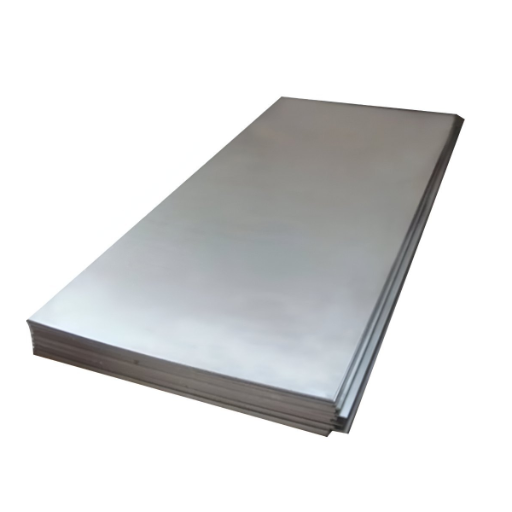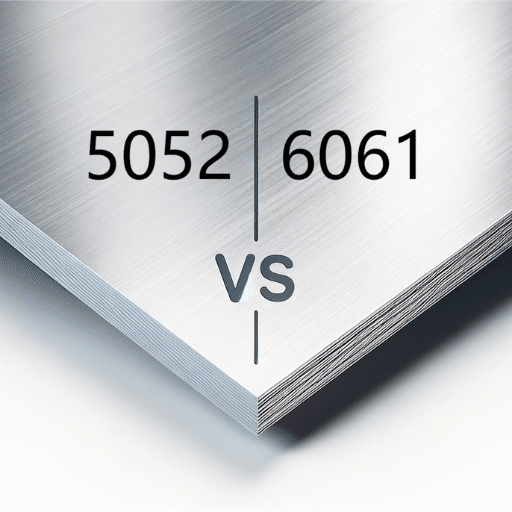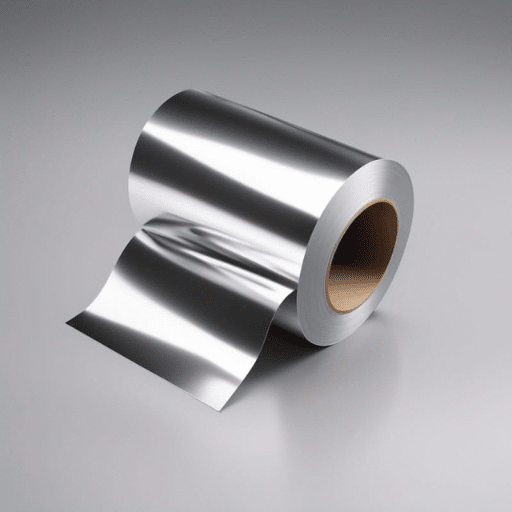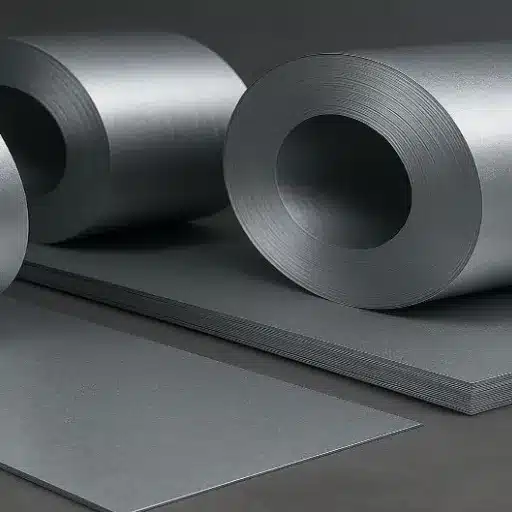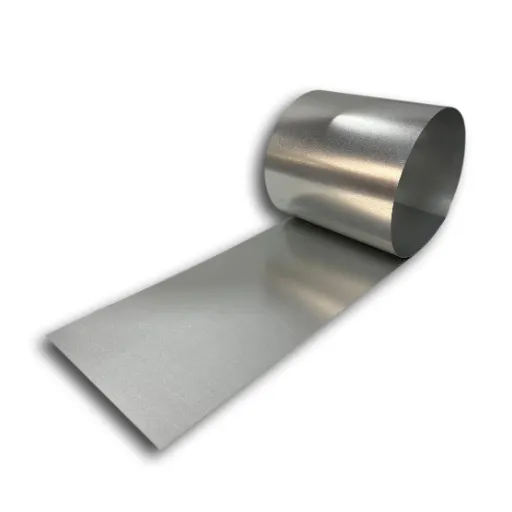Stainless steel plates play a critical role in numerous industries, from construction and manufacturing to energy and chemical processing. Among the many standards governing their production, ASTM A240 and ASME SA-240 are two of the most widely recognized and adhered to specifications. But what exactly do these standards entail, and why are they so important? This article serves as a comprehensive guide to understanding the ASTM A240 and ASME SA-240 specifications, detailing their scope, key requirements, and the wide range of applications they support. Whether you’re an engineer, a procurement professional, or a material science enthusiast, this breakdown will provide you with the clarity and insights needed to appreciate the technical excellence and versatility of stainless steel plates defined under these critical specifications.
Introduction to ASTM and ASME Standards
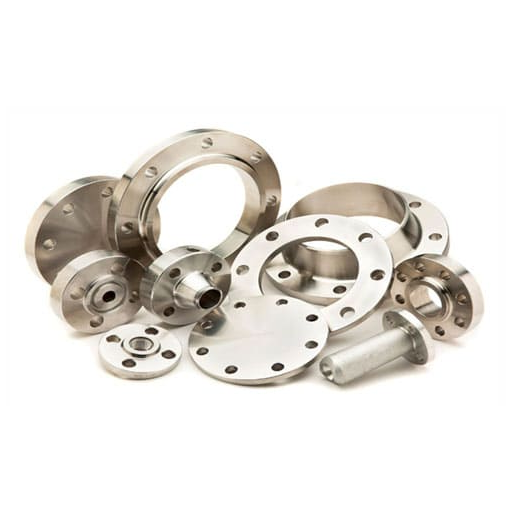
Overview of ASTM A240
ASTM A240 standard addresses chromium and chromium-nickel stainless steel plate-sheets-strips intended for pressure vessels, general applications, and welded construction. It specifies strict guidelines concerning their chemical composition, mechanical properties, and manufacturing processes so that they would satisfy certain critical performance criteria relating to structural integrity and durability. This specification emphasizes improved corrosion resistance, thereby making it highly relevant to an environment exposed to moisture, chemicals, or extreme temperatures.
ASTM A240 includes various stainless steel grades, such as the much-used 304 and 316 varieties, which differ in alloy composition and resultant properties. For example, Grade 304 is geared mostly towards corrosion resistance and formability, while 316, with molybdenum added, offers better resistance to harsher chemical environments. These grades are thus segregated based on applications to ensure that end-users may select the material best suited for their needs.
One of the key words that come up when discussing ASTM A240 is testing and quality control. Materials are tested through rigorous processes to check for things like tensile strength and corrosion resistance, and only materials passing the tests are deemed to comply with the requirements of ASTM A240. The thoroughness of this approach guarantees high-quality products, hence allowing industries such as chemical processing, food equipment, and aerospace sectors to rely on it. The better life cycle provided by the acceptance of this specification assures safety, efficiency, and longevity of infrastructure and equipment.
Overview of ASME SA-240
ASME SA-240 is a specification given by the American Society of Mechanical Engineers that covers the manufacturing and composition of chromium and chromium-nickel stainless steel plates and sheets for use at elevated temperatures and pressures. The specification covers the chemical composition, mechanical properties, and methods of testing for the materials so that the requirements for operational safety and structural integrity are met in essential industries such as petrochemical, nuclear, and marine engineering.
Materials conforming to ASME SA-240 are subjected to tests for tensile strength, yield strength, and elongation to establish their adequacy when subjected to mechanical stresses. The materials are also subjected to a precise determination of their chemical composition to ensure that the material under consideration contains the required amount of chromium, nickel, and other alloying elements. As a result of this detailed characterization and the definition of acceptance criteria, ASME SA-240 ensures that the risk of material failure is greatly reduced, particularly in environments where corrosion or very high temperatures may be involved.
The specification is considered in selecting materials for pressure vessels, boilers, and heat exchangers, wherein the durability of the material has a direct bearing upon the safety and efficiency of the system. The ASME SA-240 certified product thus commanded the confidence of engineers and manufacturers alike, in respect of points of performance and suitability in complex applications. The standard thereby ensures the uniformity of engineering practices throughout the world, thus leading to the development of industrial infrastructure.
Importance of Standards in Stainless Steel Manufacturing
Standards are set in stainless steel manufacturing to ensure consistency, quality, and safety for materials used in different industries. They set certain universal criteria facilitating compatibility and reliability so that such products succeed in their performance and environmental criteria. Without standards, manufacturers would have to deal with wide variability in material properties, leading to failures under the stress of operation or exposure to ambient environments.
These standards help in international trade by harmonizing specifications across regions. Standardization allows for free collaboration and procurement. ASTM standards, like SA-240, may be a global verification of the mechanical and chemical properties of a stainless steel. Such consistency decreases the risk of associating with a substandard material and enables engineers and manufacturers to work on more advantageous designs.
Compliance with manufacturing standards also promotes regulatory acceptance and builds public confidence. In most cases, they are subjected to stringent regulations that require certification from government bodies. By conforming to standards, manufacturers minimize some liability risks and ensure that their products perform safely in situations that require intense application. Hence, these types of standards are very important.
Understanding Stainless Steel Grades
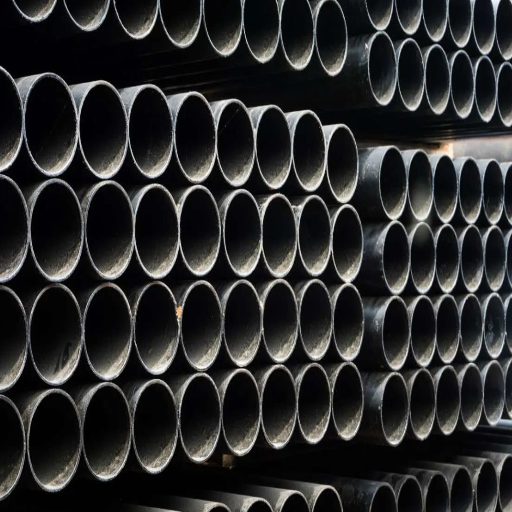
Grade 304 Stainless Steel Sheet Properties
Also called an austenitic chromium-nickel steel, Grade 304 stainless steel has stainless and chemical corrosion properties to suit versatile application needs. Chemically, it contains chromium in the range of 18-20% and nickel in between 8-10.5%; two metals which form an oxide layer as the protectant against oxidation and rusting. The material has a density of about 8.0 g/cm³ and a melting range from 1,400°C to 1,450°C; therefore, it can be used for processing involving high-temperature applications.
In strength, Grade 304 has about a 515-MPa (75 ksi) tensile strength and approximately 205-MPa (30 ksi) yield strength and up to 40% elongation. It has excellent toughness at cryogenic temperatures and does bear up well under hot or cold working conditions. With a moderate thermal conductivity of about 16.2 W/mK at 100°C, it comes with a thermal expansion coefficient of about 17.2 µm/m°C that can pose a design consideration under applications with harsh temperature variation.
Machinability and weldability promote the greater application of the grade, too. It welds well by almost all welding methods, and unlike other stainless steels, post-weld annealing is not usually necessary for thinner sections. Grade 304 stainless steel sheets, on the other hand, are used across a wide range of industries, including food processing, chemical equipment, architectural use, and automotive components-already boasting an equally functional and aesthetic appeal.
Mechanical Properties of 304 Stainless Steel Plate
Grade 304 stainless steel offers an impressive balance of strength and ductility. Therefore, it stands as one of the most versatile materials for industrial and structural applications. Its properties are determined by its composition and microstructure: roughly 18% chromium and 8% nickel. The following data shows major mechanical properties of grade 304 stainless steel:
- Tensile Strength: Ultimate tensile strength (UTS) of 304 stainless steel is somewhere in the region of 515 MPa (megapascals) or about 75,000 psi, forcefully indicating the maximum stress the material can withstand before fracture.
- Yield Strength: Yield strength is the stress at which the material begins to deform plastically. It is around 205 MPa (30,000 psi). This shows it is very resilient to a certain extent under intermediate loading.
- Elongation at Break: Being able to attain elongation from 40 to 50% in a regular tensile test implies high ductility for 304-grade stainless steel, affording it considerable deformation before actual failure occurs.
- Hardness: This measures hardness moderately at about 201 HB by Brinell hardness testing techniques, thus conferring a reasonable degree of machinability and workability for 304 stainless steel.
- Modulus of Elasticity: Its value is considered to be roughly 193 GPa, providing an idea related to the stiffness and deformation seen from its stress response.
These properties are closely matched by superior corrosion resistance, especially in oxidizing media, and the maintainability of structural integrities over extreme temperature ranges. These combined properties therefore render this grade of ASTM 304 stainless steel a reliable and quite versatile material in various processing industries, ranging from working on the manufacturing of equipment to architectural designing and beyond.
Comparison with Other Stainless Steel Grades
ASTM A240 includes grades such as 304, 304L, 316, 316L, 321, 410, 904L, UNS S31803, UNS S32750, and UNS S31254, ranging from austenitic, ferritic, martensitic, to duplex stainless steels.
|
Key Point |
ASTM A240 |
304 |
316 |
410 |
904L |
S31803 |
|---|---|---|---|---|---|---|
|
Type |
Specification |
Austenitic |
Austenitic |
Martensitic |
Super Austen. |
Duplex |
|
Cr (%) |
17.5-19.5 |
17.5-19.5 |
16-18 |
11.5-13.5 |
19-23 |
21-23 |
|
Ni (%) |
8-10.5 |
8-10.5 |
10-14 |
0.75 |
23-28 |
4.5-6.5 |
|
Mo (%) |
– |
– |
2-3 |
– |
4-5 |
2.5-3.5 |
|
Tensile (ksi) |
75 |
75 |
75 |
65 |
71 |
90 |
|
Yield (ksi) |
30 |
30 |
30 |
30 |
31 |
65 |
|
Elongation (%) |
40 |
40 |
40 |
20 |
35 |
25 |
|
Hardness |
92 HRB |
92 HRB |
95 HRB |
96 HRB |
95 HRB |
31 HRC |
Applications of ASTM A240 / ASME SA-240 Materials
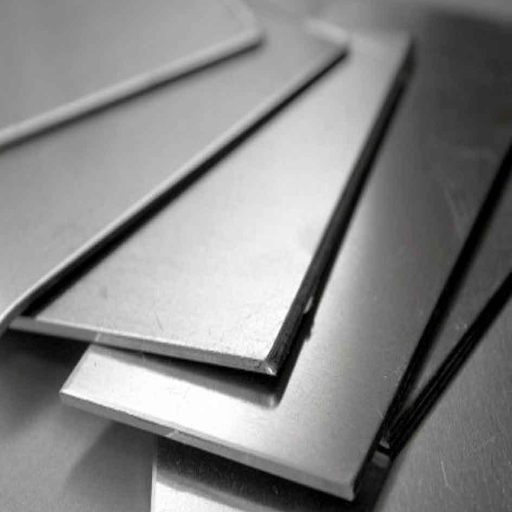
Common Applications of Stainless Steel Plates
Given the corrosion resistance, durability, and strength stainless steel plates carry, the ASTM A240 / ASME SA-240 grade of stainless steel plates could be put to use by a wide array of industries. Provided below is a detailed articulation listing five common applications:
- Chemical and Petrochemical Processing: Stainless steel plates are widely used in tanks, pressure vessels, and pipeline manufacture in chemical plants and refineries. These installations need to resist corrosive substances that can include acids, alkalis, and chlorides, thus ensuring the long-term reliability of such installations under very harsh operational environments.
- Food and Beverage Industry: Stainless steel plates are extensively used for manufacturing equipment for food preparation, storage, and conveyance, as their non-reactive surfaces ensure hygienic conditions and safety while conforming to FDA and other regulatory standards on food-grade materials.
- Architectural and Construction Applications: Having aesthetic appeal and durability, stainless steel plates are pretty much used for building facades, structural supports, and architectural instruments. Corrosion resistance from extreme weather atmospheres and long application life exalt them for the functional and ornamental purposes.
- Marine Environment Applications: With their utmost corrosion resistance to a saline environment and marine atmospheres, stainless steel plates find applications in dry docking, shipbuilding, offshore platforms, and desalination plants. Thus, stainless steel plates ensure that all other materials may not be the cause of degradation and failure.
- Medical and Pharmaceutical Equipment: Stainless steel plates are used to manufacture surgical instruments, medical devices, and pharmaceutical machinery. Their ability to undergo sterilization and resistance to chemical disinfectants enable them to be the first preference in any kind of clean environment.
The application above just goes to show the capacity of characteristics that follow the stainless steel plates when customized according to given industrial needs, which essentially boosts their utility and wide acceptance in the global market.
Industry-Specific Uses of Grade 304 Stainless Steel
The stainless steel grade 304 is highly regarded for its corrosion resistance, tensile strength, and formability, and is indispensable in numerous fields. Its balanced composition of chromium and nickel endows it with good performance characteristics under various environmental conditions. The table below lists the applications of stainless steel Grade 304 in different industries:
- Food and Beverage Industry: Grade 304 stainless steel finds application in a vast array of food processing equipment, storage tanks, and kitchenware. It is non-reactive to acidic or alkaline substances, and the smooth surface of this material allows complete cleaning, thus reducing bacterial contamination.
- Chemical Processing: Reaction vessels, pipelines, and storage vessels are made using this material for transporting or processing chemicals, especially those at low to moderate concentrations, as it can resist oxidation and chemical corrosion.
- Architecture and Construction: Grade 304 stainless steel has always been the favorite for structural items, sheets, and cladding because of its strength and attractiveness. These features rank it for usage outdoors as well as indoors since exposure to atmospheric conditions is really a big aspect with respect to whatsoever application.
- Medical Industry: Having properties of biocompatibility and sterilizability, it finds applications for surgical instruments, orthopedic implants, and a hospital-grade environment. The polished hygienic finish with Grade 304 stainless steel ensures that strict health and safety codes are observed.
- Automotive and Transportation: Grade 304 is used for components requiring construction durability to resist environmental impact, ranging from exhaust systems to trim and cladding. It therefore aids fuel efficiency without undue compromise on performance because it is lightweight and strong.
- Energy Sector: This material facilitates the construction of equipment in renewable energy production, such as solar panels and geothermal systems, due to its resistance to high thermal stress and corrosive media.
Apart from all the domains mentioned above, the adaptability and reliable nature of Grade 304 stainless steel ensure it is used in applications that are advancing industrial production and innovation.
Benefits of Using Stainless Steel in Various Applications
Considered to be one of the widely used stainless steel grades, 304 type offers a host of benefits, making it essential across a variety of industries. Here are some of the principal advantages:
- Corrosion Resistance: Stainless steel offers good corrosion resistance in acidic or saline media. Herein they watched the applications in the marine field wherein the stainless steel resists saltwater exposure and thus furnishes good reclamation with minimum maintenance. Studies reveal that stainless steel structures last for more than 50 years within the marine environment, given proper maintenance.
- Strength and Durability: Excellent mechanical properties allow stainless steel to Exhibiting high tensile strength after wear resistance plus against deformation. This is useful whenever we carry out operations under mechanical heavy loads, such as in load-bearing constructions or industrial plants.
- Hygiene and Easy Maintenance: Being non-porous, stainless steel surfaces provide fewer options for bacteria to grow and easier cleaning operations. For this reason, its surfaces are duly employed for medical apparatuses, food processing equipment, and pharmaceutical production. According to a recent study, the hygiene properties of stainless steel reduce contamination risks by 40 per cent as compared with alternative materials.
- Recyclability: Given the fact that stainless steel is recycled 100%, it stands as an environmentally friendly material. It is said that more than 50 per cent of brands in stainless steel are made with recycled material, which significantly helps reduce the carbon footprint of industries using the material.
- Thermal and Chemical Resistance: Temperature extremes and chemical assaults can be endured by stainless steels, which explains their importance in high-performance applications such as chemical processing plants and energy production. Stainless steel can endure temperatures over 1,500°F (815°C), a characteristic that makes it indispensable for the manufacture of heat exchangers and furnaces.
All these benefits emphasize the great versatility and reliability of stainless steel, thus making it a basic material in modern engineering and technology.
Differences Between ASTM A240 and ASME SA-240
Key Differences in Specifications
Precisely specifying and procuring chromium and chromium-nickel stainless steel plates, sheets, and strips for pressure vessel applications and general purposes usually involves ASTM A240 and ASME SA-240. Since these two standards are closely related concerning the composition and use of the materials, the major differences exist at the technical level, arising from the respective regulatory contexts and specific applications.
- Regulatory Bodies and Uses: ASTM A240 is published by the American Society for Testing and Materials (ASTM) and wears its crown in the domain of general industrial applications, with an emphasis on standardized test methods, grades of material, and mechanical properties. Whereas ASME SA-240 is the one issued by the American Society of Mechanical Engineers (ASME) to mirror the ASTM code with a set of additional requirements that ensure the standard is compatible with the ASME Boiler and Pressure Vessel Code (BPVC). Hence, SA-240 becomes critical for pressure vessels and high-pressure systems in the petrochemical and power-generating industries.
- Certification and Testing Requirements: Verification of compliance with BPVC certifications is one of the bigger testing requirements in ASME SA-240 standards. In contrast to ASTM A240 standards, which require testing only for standard chemical composition and mechanical properties, SA-240 calls for more stringent checks, such as material traceability and verifications through authorized inspections. The objective here is to emphasize safety in critical environments where the circumstances of the materials include high pressure or temperature.
- Thickness and Tolerance: This specification is also a source of several ASTM A240 versus ASME SA-240 differences about thickness tolerances, especially for materials used in stringent engineering applications. For example, SA-240 tolerances may be narrower in dimensions that are critical to pressure vessel durability and performance.
- Material Grades and Dual Certification: Most stainless steel plates and sheets are dual-certified to comply with both ASTM A240 and ASME SA-240 standards, except certain niche or specialty grades, which may only appear under one specification. Engineers must then carefully choose materials meeting the particular standard needed for their equipment design.
By grasping these distinctions, engineers and procurement specialists can correlate material selection to safety, regulatory, and functional requirements specific to their applications, thus avoiding costly mismatches in material properties or non-compliance.
Implications for Manufacturers and Engineers
The choice and application of standardized material have serious effects on both the manufacturers and the engineers. Lack of conformity to relevant standards or lack of complete evaluation of material properties can incur hazards of inefficiency during operations, serious safety hazards, or even non-compliance with the law.
- Compliance with Regulations: Ensure that the materials meet all pertinent industry and governmental standards for such certifications and approvals. In a pressure vessel design, for instance, the respect of the ASME Section II standards will ensure conformity with expectations of safety, and hence, egregious legal liabilities or fines are avoided.
- Performance of Material Under Operational Conditions: The engineers should consider the factors that may cause materials to perform best in certain operational stresses, such as temperature, tensile strength, and corrosion-resistance. For instance, at high temperatures, alloys like Inconel are preferred because of their resistance to heat and oxidation.
- Cost Efficiency and Utilization of Resources: By stipulating the materials within exact parameters, it frustrates spending too much for over-engineered components or a substandard material that could fail prematurely. In-depth evaluation could help reduce the maintenance cost and increase the longevity of the equipment.
- Supply Chain Optimization: Manufacturers should negotiate with suppliers for materials that conform to exact specifications. Any confusion about material grades during procurement can incur production delays or increase costs. For instance, sourcing materials that are correct as per ASTM or ISO grades banks on ensuring quality through the supply chain.
- Sustainability and Being Environmentally Responsible: It is becoming very important to use materials that are recyclable or sustainable. By following standards that promote environmentally friendly practices, such as ISO 14001 for environmental management, manufacturers can reduce their environmental footprint and become aligned with global goals for sustainability.
The indicated implications present some implications of material selection and usage from the technical angle, regulatory matters, and from strategic planning.
Emerging Trends and Innovations in Stainless Steel
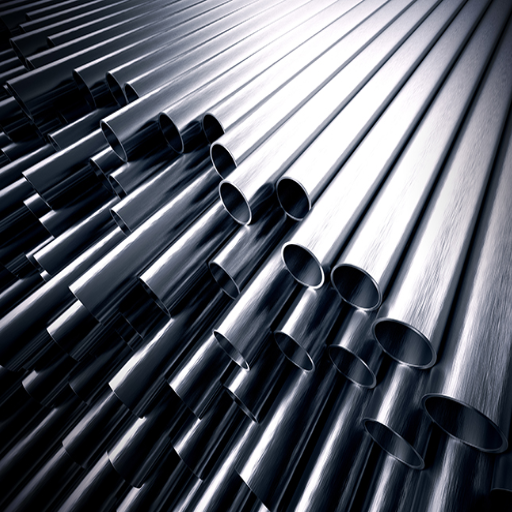
Recent Developments in Stainless Steel Production
Improvement in stainless steel production is continuously fostered by demand concerning better performance, sustainability criteria, and cost efficiency. Among the developments is the use of electric arc furnaces (EAFs) for stainless steel production. From the perspective of EAFs, recycled scrap metal is primarily used; thus, consumption of energy and carbon emissions are markedly lower compared to those of traditional blast furnaces. This is in line with industrial objectives toward the reduction of greenhouse gas (GHG) emissions and stringent environmental regulations.
Another set of key innovations involves further enhancement through advanced alloying techniques such as higher chromium, molybdenum, and nitrogen contents. These changes further improve stainless steel corrosion resistance, strength, and service life, which are all required in a demanding medium such as the marine and chemical processing industries. In addition to low nickel and nickel-free steels, these grades will also be promoted as a hedge against the price volatility of nickel.
On the other hand, digitalization and automation of the production structure also impact predictive maintenance, real-time monitoring, and artificial intelligence (AI)-based solutions. Such technologies streamline the manufacturing process while enhancing the consistency and quality of the products.
While focusing on further reducing the carbon footprint of stainless steel, green hydrogen has been developed to replace carbon-based reductants during the production processes. Thus, this technology could probably lead to the next level of transformation by bringing near-zero emissions to a stainless steel production setup while retaining the highest standards in stainless steel manufacturing. A finer realization of all these satisfactorily attests to the industry’s commitment toward innovation and sustainability.
Future Trends in Stainless Steel Applications
The future application of stainless steel is thus going to be the playing ground for various technologies, sustainability issues, and evolving industrial demands. The first big trend is increasingly using stainless steel for renewable-energy infrastructure. Its off-the-charts corrosion resistance and strength place it as the material in solar panel frames, wind turbine components, and hydrogen storage systems. As the energy transition ramped up globally, stainless steel will play its role in standing up to massive and enduring renewable energy systems.
Additive manufacturing (3D printing) is another major trend for stainless steel production. This technology allows for the accurate production of complicated geometries, minimizing waste, and giving ground for huge savings in costs. 3D printing of stainless steel components is already being embraced in aerospace and healthcare, as such components can combine high strength with intricate design.
In keeping with sustainable urbanization, stainless steel is drawing much attention from the construction sector. Its recyclability, along with a negligible maintenance regime, makes stainless steel a perfect component in green buildings. Innovations involving stainless steel mesh facades, rainwater harvesting systems, and antimicrobial coatings are beginning to create an essential positioning for it in contemporary building practices.
Surface treatments and alloy compositions are setting new limits to functional possibilities of stainless steel. These include developments in smart surface technologies possessing self-cleaning, anti-fingerprint, and even antibacterial capabilities. Such applications are crucial in the healthcare and food processing industries, where hygiene standards must be strictly maintained.
While these trends highlight stainless steel’s ability to sustain itself, with continued research and investment in materials science, its potential will be further enhanced, making it relevant in a very large array of future applications.
Innovations in Material Properties and Processing
Material properties and processing techniques have evolved to augment stainless steel. A noteworthy innovation is the nanostructured surfaces that have been created to resist corrosion, reinforce mechanical properties, and exhibit superhydrophobic behavior. Nanostructuring entails the precise control of surface topography and chemical composition at the nanometer level. Laser treatment techniques, such as laser cladding and laser surface melting, have also come to the fore in improving surface quality and protecting the metal from aggressive service conditions.
Meanwhile, alloy design has evolved into the formulation of high-entropy stainless steels that offer an exceptional strength-to-weight ratio and thermal stability. Complementary to this, computational modeling and machine learning are leveraged to predict and customize alloy compositions for intended applications, thereby expediting the entire innovation life cycle while cutting down on manufacturing costs and improving the skill of material performance.
These manufacturing methods for additive production, including powder bed fusion and directed-energy deposition, permit complex geometries to be built with minimal wastage. Hence, this opens up the possibility in industries for aerospace, automotive, and biomedical engineering of customization, thereby proving stainless steel as a material not only of legacy but also of forward-looking design and application.
References
-
OnePetro: ASME SA 240 (UNS S 32100) Explosion Cladded to ASME SA 542 Type D Class A – This source discusses the application of ASME SA 240 in extreme hydrogen service.
-
AMPP (Association for Materials Protection and Performance): Characterization of ASME SA 240 (UNS S 32100) Explosion Cladded to ASME SA 542 Type D Class A – A detailed study on the properties and applications of ASME SA 240.
-
ResearchGate: Influence of Welding Consumables on Tensile and Impact Properties of AISI 316L ASS Using SMAW – This paper references ASTM A240 and ASME SA-240 standards in the context of welding and material properties.
Frequently Asked Questions (FAQ)
Q: What is ASTM A240 / ASME SA-240?
A: ASTM A240 / ASME SA-240 is a standard specification for chromium and chromium-nickel stainless steel plates, sheets, and strips. It covers a range of alloy grades that are used for various applications, including those requiring excellent corrosion resistance.
Q: What materials are covered under ASTM A240 / ASME SA-240?
A: The standard covers various grades of stainless steel, including AISI 304, which is commonly used in the production of stainless steel 304 plates and SS 304 sheets. These materials are known for their durability and resistance to corrosion.
Q: How does ASTM A240 / ASME SA-240 relate to stainless steel products?
A: ASTM A240 / ASME SA-240 sets the specifications that stainless steel products must meet to ensure quality and performance, particularly in environments where corrosion is a concern. This includes stainless steel sheet and plate used in various industries.
Q: What are the typical applications of materials under ASTM A240 / ASME SA-240?
A: Materials that comply with ASTM A240 / ASME SA-240 are typically used in chemical processing, food and beverage processing, and architectural applications, where excellent corrosion resistance is required.
Q: Can I find different sizes of stainless steel plates under ASTM A240 / ASME SA-240?
A: Yes, ASTM A240 / ASME SA-240 specifies that stainless steel plates and sheets can be produced in various sizes to meet project requirements, allowing flexibility for different applications.
Q: What is the importance of using a reputable plate supplier for ASTM A240 / ASME SA-240 materials?
A: Using a reputable plate supplier ensures that the stainless steel products meet the necessary standards for quality and performance as outlined in ASTM A240 / ASME SA-240, which is essential for maintaining structural integrity in applications.
Q: What should I consider when selecting alloy grades under ASTM A240 / ASME SA-240?
A: When selecting alloy grades, consider the specific environmental conditions, mechanical properties, and the need for excellent corrosion resistance. Typical grades include SS 304 for general use and other alloys for more specialized applications.
Q: How does the standard specification for chromium and chromium-nickel affect material selection?
A: The standard specification for chromium and chromium-nickel helps in determining the appropriate alloy grades that provide the required strength and corrosion resistance for specific projects, influencing material selection significantly.
Q: Are there any alternatives to ASTM A240 / ASME SA-240 materials?
A: While ASTM A240 / ASME SA-240 is a widely accepted standard for stainless steel products, other specifications may exist for specific applications. However, materials meeting these standards are often preferred due to their proven performance in various industries.

